Top Innovators
PPL won the Fortnightly Top Innovator 2024 award ''John Beggs Top Innovator in Energy Transition'' for its Renewable Energy Research Facility.
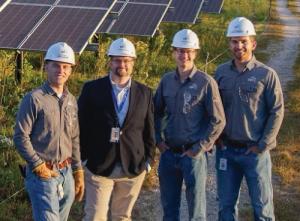
PUF's Steve Mitnick: Talk about this innovation and its impact.
Aron Patrick: As you know, the sun doesn't always shine, and the wind doesn't always blow, so one of the challenges with moving toward increased renewable integration and decarbonization is the intermittency of solar, wind, and even hydro. Hydroelectric only performs if the water level behind the dam is at a sufficient level, which correlates with rainfall and snow melt.
We've deployed solar, wind, and hydro, but these technologies are intermittent. We're trying to combine them in one place to show how they're counterbalancing each other, and their integration can improve overall reliability and lower costs of renewable generation for customers.
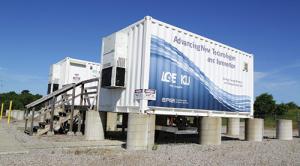 Aron Patrick: We’re proud that we have completely automated the facility. It’s running now, and we’ve developed a basic dispatch program that makes decisions for itself and programs the battery when to store power, when to dispatch power, et cetera.
Aron Patrick: We’re proud that we have completely automated the facility. It’s running now, and we’ve developed a basic dispatch program that makes decisions for itself and programs the battery when to store power, when to dispatch power, et cetera.
The sun doesn't shine at night and isn't able to provide good solar power when there's a storm, the skies are dark or there're too many clouds. Wind balances well with that because the wind blows at night. Also, we have these effects seasonally, so it's not just by hour of the day but across the years and seasons.
The sun shines stronger and brighter in the summer, so we get a lot more solar power out of our solar farms in the summertime, but in the winter, it's often cloudy. The sun rises later, and sets earlier in the day in winter, so there's less solar power available.
Wind performs best in the winter and quite often at night. The combination of wind and solar helps push us along. We also have hydroelectric at the site, which we've operated for one hundred years.
In Kentucky, we have two hydroelectric facilities, Dix Dam and Ohio Falls. Both have a different generating profile. Hydro is not dependent upon wind, and not dependent upon sun, so that's a third profile. At the site we combined wind, solar, hydro, and energy storage to provide 24/7, more reliable power.
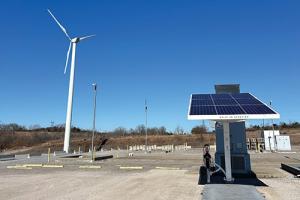 The PPL R&D team established the Renewable Integration Research Facility at its operating company Kentucky Utilities’ E.W. Brown Generating Station to study how renewable energy can provide reliable and affordable 24/7 power, while accelerating the energy transition.
The PPL R&D team established the Renewable Integration Research Facility at its operating company Kentucky Utilities’ E.W. Brown Generating Station to study how renewable energy can provide reliable and affordable 24/7 power, while accelerating the energy transition.
Renewables and storage are not currently able to provide one hundred percent of our energy needs, but the data we're gathering is important to understanding what these technologies can and cannot do, and how they work together to complement each other to provide reliable, low-cost power for customers.
PUF: David, what does this test facility look like?
David Beyerle: We've got a ten-megawatt solar farm that neighbors the facility. Within the facility, there are two, three hundred sixty-degree solar panels that track the sun across the sky. We've got our wind turbine, a solar electric vehicle charger, and lithium-ion battery.
PUF: What do you do with your analysis?
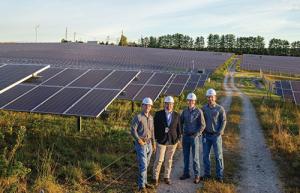 The PPL team at a solar array, from left, Chad Alkire, Aron Patrick, Samuel Kelty and David Beyerle.
The PPL team at a solar array, from left, Chad Alkire, Aron Patrick, Samuel Kelty and David Beyerle.
Samuel Kelty: We analyze the data we collect. We collect secondly data and push minutely data to our website on our public facing dashboards for the E.W. Brown solar generation, as well as for the renewable integration research facility's lithium-ion battery.
It's the same for the hundred-kilowatt wind turbine. All that data is collected, we analyze it, and input it into our models to help forecast renewables and the energy they can provide.
Aron Patrick: We're proud that we have completely automated the facility. It's running now, and we've developed a basic dispatch program that makes decisions for itself and programs the battery when to store power, when to dispatch power, et cetera.
We've built all this ourselves and are going to continue to refine that to make it better and give it more artificial intelligence to make more rules. Historically, before we built the wind turbine or integrated with hydro, it was just dispatching in response to solar. This site operates itself, and it makes decisions on how to dispatch that power.
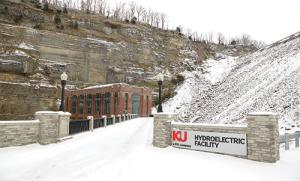 Chad Alkire: I’m a research engineer on this team, so I not only help keep the site going, but also modify the artificial intelligence logic and perform analytics on the unique renewable and battery data being collected here.
Chad Alkire: I’m a research engineer on this team, so I not only help keep the site going, but also modify the artificial intelligence logic and perform analytics on the unique renewable and battery data being collected here.
PUF: What are everybody's roles in the project?
Aron Patrick: My role is often the idea generator and coming up with creative ideas. We share the same role in brainstorming, coming up with ideas, and then implementing. Samuel was physically there to manage the installation of the solar trackers every day.
Samuel Kelty: We oversaw the installation of the three hundred sixty-degree tracking solar panels and their installation in the facility. Our teammate, Chad, oversaw the installation of the wind turbine. The whole team is responsible for the site's maintenance and management.
PUF: Chad, what's your role in all this?
Chad Alkire: I'm a research engineer on this team, so I not only help keep the site going, but also modify the artificial intelligence logic and perform analytics on the unique renewable and battery data being collected here.
PUF: Aron, where might this go in the next year or two?
Aron Patrick: There's no end. We have an all-of-the-above technology strategy. We are committed to fulfilling our mission of providing safe, reliable, affordable, and sustainable energy, and we are evaluating many different technologies that can help improve our ability to provide safe, reliable power to our customers.
We're looking at wind, solar, hydro, but also looking at different types of solar. We have the three hundred sixty-degree trackers that are tracking in the sky, and this isn't the end.
Next month, we'll be installing single access trackers. By October, we'll have a third type of solar in the site, a single access tracker, which isn't able to rotate at three hundred sixty degrees but does improve output by following the sun along one dimension.
We're going to have three types of solar and three types of different panels. We have monocrystalline silicon, which are high-performance solar panels, traditional polysilicon, as well as fixed and tracking. We're testing how those technologies can integrate with one another.
PUF: What's rewarding for you in this project?
Aron Patrick: I am excited about improving renewable integration. I want to increase renewables and the reliability and cost-effectiveness, so it's been rewarding to see all of these happen.
Samuel, David and Chad spend a lot of time analyzing the data and finding lessons learned. We're sharing the data we're collecting in real time with the public on our websites.
What's been most exciting is there are researchers using that data and there're a lot of academic publications. We've had a dozen or so papers written about the battery. It's not just a battery that's backing up solar and wind, it's also collecting data.
What's the temperature? What's the voltage? What are the conditions inside of that battery? It gathers that data for every cell every second, and we have been taking that data, not only analyzing it but giving it away.
We also are working with EPRI. We're sharing the data with them. There are several national labs and universities that use the battery data because we have this all-of-the-above technology strategy.
We don't know what the right technological answer is, and we want to track those technologies to better understand them. An open-door policy on the data we're collecting, and transparency are going to spur research and innovation that will help PPL Corporation move forward and help all of us move forward to this future of an increasingly decarbonized, renewable electricity portfolio.
PUF: Samuel what's rewarding for you?
Samuel Kelty: I find it rewarding to see all the renewables integrated into our larger portfolio. We've added the wind and the tracking solar, and it's rewarding to see that data publicly pushed out to our websites so the results are shared, and everyone can benefit from the information we're including for how to integrate more renewables into Kentucky's portfolio. The data can be applied elsewhere.
PUF: David, what's rewarding for you?
David Beyerle: It's a learning opportunity. The research that's being done, and all the people working with our data and with the technologies that we have onsite also provide a good opportunity for me to learn, which is rewarding.



